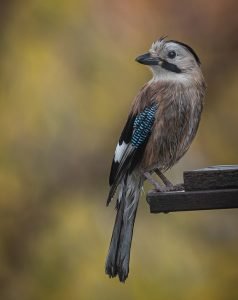All about Birds
How To Pick The Perfect Spot For Birdwatching
Did you know that birdwatching is a popular activity for many people? What’s not to love about getting out in nature and observing these beautiful creatures up close? Whether you’re a beginner or an experienced birder, there are plenty of great places around the world to see birds.
Birds can be fascinating creatures to watch. Even watching a pigeon on the street can be an interesting experience. Birdwatching, or observing birds in their natural habitat, is a popular hobby.
There are many reasons why someone might want to birdwatch, whether they’re interested in the different species of birds, how they behave, or simply enjoying being outdoors. Whatever the reason, birdwatching can be a fun and rewarding activity. So if you’re interested in learning more about birdwatching, keep reading!
What to look for when choosing a spot for birdwatching

Whether you’re a bird-watching enthusiast or just getting into bird-spotting, understanding what to look for when choosing the perfect bird-watching spot can go a long way. Firstly, find an area with plenty of bird diversity and consider the type of birds you’d like to detect.
Different bird species prefer different types of habitats, and many birders use bird field guides to identify the ideal habitats for their bird watch, so be sure to choose a spot that is suitable for diverse bird species. Additionally, ensure that your bird-watching location offers plenty of perches, providing a prime spot for birds to rest while they search for food.
Finally, wooded areas or wetlands are excellent bird-watching spots as they provide ample cover and potential food resources. With these tips in mind, bird watchers will surely have an enriching experience.
How to identify different types of birds
Bird watching can be fun and rewarding, but it can be challenging to identify bird species without some instruction. The best way to become proficient at bird identification is by getting to know the birds commonly seen in your area. Take time to observe the size, shape, and coloration of their feathers, as well as key features such as the beak type and birdcall.

Then, use books, websites, or other bird-watching apps to compare your observations with bird identification photos and recordings. For example, if you’re looking for a small songbird in shades of yellow-green with a thin beak, chances are that you’ve spotted a common yellowthroat.
Bird watching is challenging but satisfying when you make accurate guesses about bird identity; with practice, identifying different types of birds will soon become second nature. As you gain experience bird watching, you’ll also learn more about their behavior, such as nesting habits and migration patterns.
Tips for getting the most out of your birdwatching experience

Birdwatching is an exciting and rewarding hobby that can be enjoyed by anyone. To get the most out of your birdwatching experience, here are a few tips.
Firstly, make sure to equip yourself with the necessary supplies—binoculars to spot birds in far-off places, a field guide to easily identify birds, and a journal to record exciting observations.
Next, know where to go. Local parks and conservation areas are good starting spots as birds like open spaces with plenty of vegetation and water bodies. Early mornings are usually best for bird watching, as birds tend to be more active then.
Lastly, be patient when it comes to observing birds—it may take some time to catch sight of them! If birds don’t appear immediately, continue scanning the area or try playing a bird call recording—you never know what surprises might await! With just a little preparation and effort, you can maximize your birdwatching experience for an enjoyable and educational outing, not just for yourself but also for those around you.
The benefits of birdwatching
Birdwatching is one of the most pleasurable and interesting outdoor activities you can take up. Not only can it become an enjoyable hobby and source of relaxation, but numerous mental and physical health benefits come with being a birdwatcher.
In terms of physical health, birdwatching encourages us to get out in nature and away from screens, helping us to get some fresh air and much-needed exercise; this improves our overall well-being.

On a psychological level, birds bring viewers happiness and satisfaction – when we observe birds in their natural habitat, birds give us a sense of peace which helps to reduce feelings of stress, anxiety, or depression. Birdwatching presents the opportunity for us to appreciate birds’ intricate behavior, beauty, songs, and all the other nuances that make birds so special; this provides a distraction from day-to-day worries, which can lead to feelings of contentment.
Therefore, watching birds is a healthy entertainment – offering invaluable mental escapism and cultural knowledge about our avian friends. All these benefits together show why birdwatching is an essential activity for people across the world.
Recommended resources for learning more about birds
If you’re interested in birds and want to learn more, there are plenty of resources available. Numerous online databases include photos and information about birds in all forms – from cozy backyard birds to seabirds and birds of prey. You can also find bird identification guides and birding newsletters that provide tips on the best places to spot birds.

To get an up-close view, binoculars are essential – not only for spotting birds at a distance but also for appreciating their colors and details. If you want to learn about how birds learn, some books dive into avian behavior and cognition – both written by scientists and birders.

